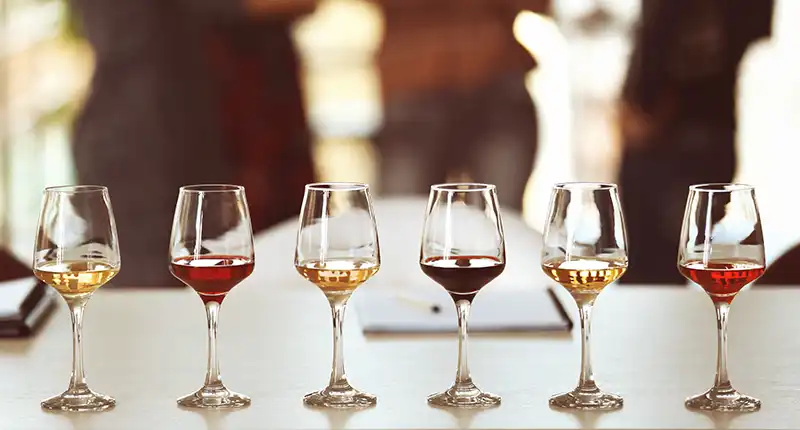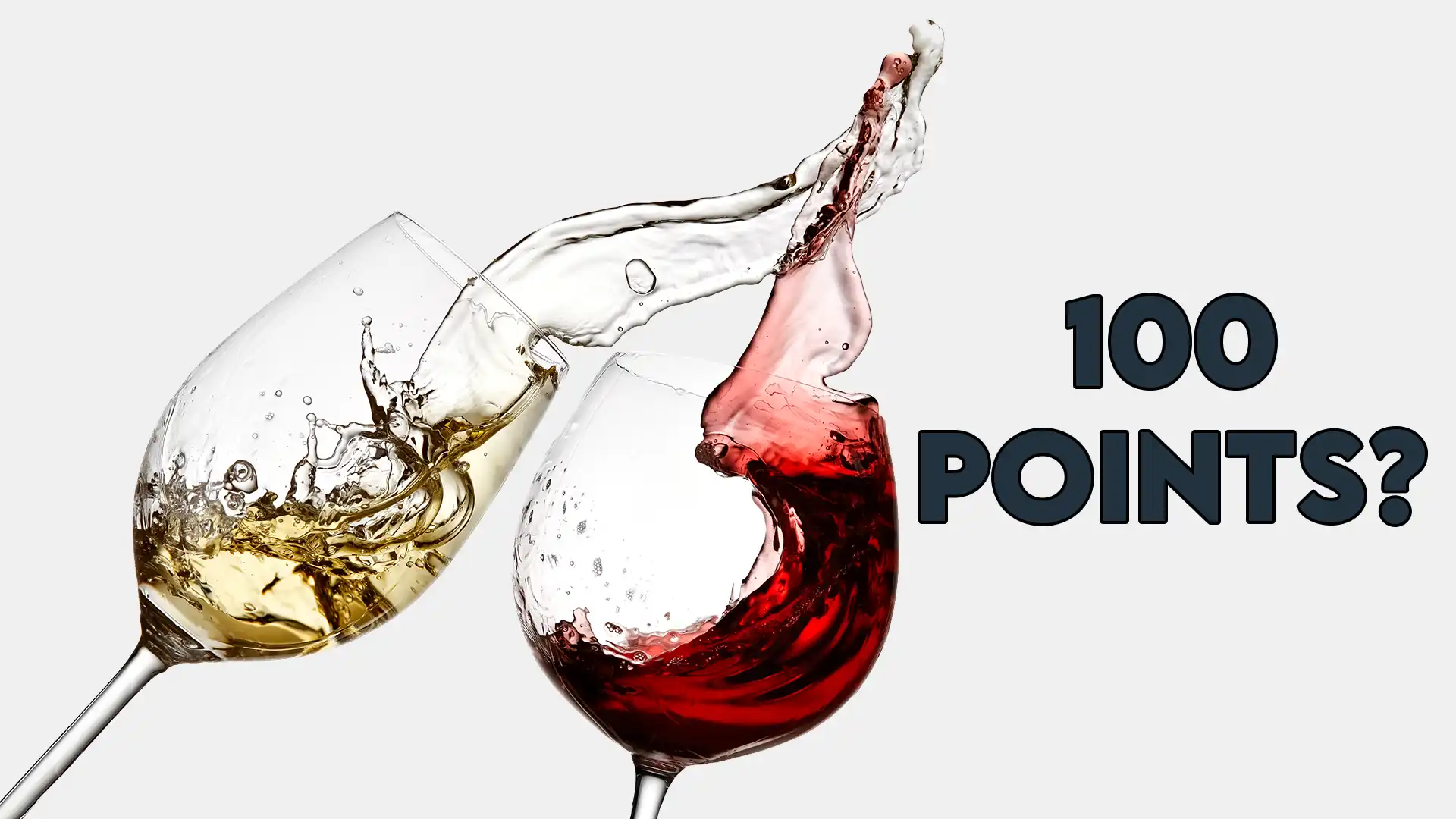There is so much hoopla about wine ratings these days that it has become somewhat of a confusing indicator of a wines actual quality. There are literally dozens of organizations that publish ratings on wines and wine makers will obviously use the highest rating they obtain from all of these published lists when describing their wine. Wouldn’t you? If they produce a decent wine, something that isn’t faulted or without any glaring flaws, they can just get it rated a bunch of times and go with whatever is the highest rating. We have all seen this countless times when we go to the store. This bottle has a 98 listed on it, another one has a 95, that one over there might have a 99 on its label. Sometimes they will show who gave them that rating but sometimes they don’t. It can be a bit overwhelming and confusing at times.
To add to the ratings confusion, some bottles have been dubbed the “100 Point” wine. Whoa! 100 points? What does that mean? One would assume that since the scale is typically 1-100, that a 100 point wine would or maybe should be considered perfect. There isn’t a rating higher than that so it would have to be perfect. Right? Who gets to decide that a wine has earned a 100 points? Does the cost of the wine play a factor in the rating?
There are so many questions that one should consider when thinking about the purchase of a “100 Point” wine. I will try to help sift through the craziness of all of this and provide some thoughts for you to ponder the next time you are looking for a great wine and that 100 point bottle on the shelf is calling your name.

So Many Critics!
At stated earlier, there is no shortage of wine critics who are willing to drink a lot of different wines and share there opinion of quality via a rating system. Clearly this is a tough job but someone has to do it, right? Most, but not all, will use a 100 point system when rating wines and, interestingly, the point scale is usually not 1-100. For most of them, the rating scale is 50-100 and they will loosely follow a guideline, through their own interpretation. In general, the following are industry descriptions for each grouping:
95-100 Exceptional!
90-94 Outstanding
85-89 Very Good
80-84 Good
75-79 Not So Good
50-74 Flawed (avoid!)
They also might tweak the numbers a little bit for each category. A few also use a 20 point system which is similar to the list above but the scale is from 10-20. An interesting observation from this is that most of these scales have room on the bottom but not on the top. Yes, a critic could technically give a wine a rating of 101 but not within a 100 point rating system. Yes, technically they could if they wanted to but they don’t. The critics always stay within their self imposed boundaries. With regard to the bottom of the scale, they could rate a wine less than 50 if there was something REALLY bad. This would stay within the 100 point scale but it is somewhat of a moot point as who would care anything about a wine rated less than 80. People are more interested in wine that is good versus wine that is bad.
I also want to make a quick point on the number of critics that are publishing ratings on wines as I have mentioned this a few times. I am not stating whether this is good or bad. I am just stating the fact that it is true. There are actually a lot of people who judge wine and publish their rating of the wine. I do believe, however, that if a rating is stated for a specific wine, the person who gave the rating should be cited. Everyone has a different pallet and tastes wine differently so it is great that consumers have so many credible ratings to consider when making a purchasing decision on a specific bottle of wine. Especially when the scale peaks at 100!
The 100 Point Scale
Now that you understand the general scale that most critics use, and the self-imposed limit of 100, what makes a bottle a 100 point wine? Obviously it is a very good bottle. You could even argue that it is better than very good. It would be an exceptional bottle. An exceedingly rare bottle of the utmost quality. Should we go as far as to say perfect? Maybe not. Perfect implies that there is nothing that could ever be any better. How could you be better than perfect? This gets even more complicated when you factor in cost. You can easily find 100 point bottles of wine for less than $300 but you can also find 100 point bottles for more, a lot more than that. Obviously they are not the same. So they are not considered perfect as why would anyone pay $3,000 (or more) for a bottle of “perfect” wine when you could buy a $300 bottle of “perfect” wine. What is the deal with this magic number?
I remember back when I was much younger, daring, and probably dumber. I used to really enjoy rock climbing. They used to rate the difficulty of climbs using something called the Yosemite Decimal System. This used a combination of two numbers separated by a decimal (e.g. 5.9). The first number was the class (with 5 being a “technical” climb requiring ropes, gear, etc.) with the second number being a difficulty rating. The difficulty rating originally started out as being 1-10 with one being the easiest technical climb and 10 being the most difficult technical climb that was possible for someone to complete. This system originally started out in the 1930’s and it sounded like a great plan to rate the various climbs. The problem, however, is that people and gear improved over the years . What was originally supposed to be the most difficult climb ever, a 5.10, was being completed by more and more people. Furthermore, climbs that were previously “unclimbable” were being successfully climbed. You couldn’t rate these climbs 5.10 as they were not the same; they were obviously more difficult. So the scale, in this case, changed. Climbs started to get rated 5.11, then came 5.12, 5.13, 5.14, and finally 5.15.
Back to wine, unlike the rating system for rock climbing, the rating systems that are used to judge wines have never changed or been altered to account for wines that might be better than previously judged wines. It is a strict 100 point system that will most likely remain this way indefinitely. You could make the argument going both ways on this subject; that the rating scale should change or it should not, but you have to remember that the wine world is steeped deep in rich history and tradition. Someone new could come along with a entirely new way of rating wines that isn’t so rigid but the existing critics are not likely to change. Once again, this isn’t being stated like it is a negative thing. It is what it is and quite frankly, I personally enjoy and respect the history, culture, and traditions that are intertwined with wine.
What Does It All Mean?
As with most things in life, it is difficult to summarize this in a single statement or phrase. It is more complicated than that but I can wrap up everything I have observed about 100 point bottles of wine in a few points you should consider when making your next purchase of a 100 point bottle:
100 points doesn’t mean perfection
Honestly, nobody can or should define what a perfect bottle of wine should be so you should never expect this when purchasing any bottle of wine. It is going to be a very good, great, or maybe even a legendary bottle of wine but it isn’t going to be perfect.
Price doesn’t affect the rating
You might expect a $1,000 bottle of wine to be a 100 point bottle of wine but that just isn’t the case. There are a lot of factors that go into the price of a bottle and quality isn’t always the #1 driving force. You also have to remember that ratings are independent of price meaning that the expectations of a 100 point bottle of wine do not change based on the price of the bottle.
Check the rating and the rater
Don’t take the bottles opinion of how it tastes. If the label on the bottle has a 100 point designator on it make sure you check who actually provided the rating to ensure they are reputable.
Get a second opinion
Remember it is a good thing that so many people share their opinions about wine. Just because one person thinks a bottle of wine is worthy of a score of 100 doesn’t mean everyone will agree. Get a second, third, fourth, or even fifth opinion to see what everyone else has to say about a particular wine. If it is truly a great wine, it will most likely have been tasted by all of the people or organizations rating wine. Use the collective wisdom of everyone to help you in your decision.
Form Your Own Opinion!
Over time, you may find that your pallet aligns with a particular person or organization that rates wines. Moving forward you may trust their ratings more and more. The old saying that the best bottle of wine is whatever YOU like the best is still very true today. At the end of the day you are the most important critic, your opinion is what matters most and the ratings be damned!
